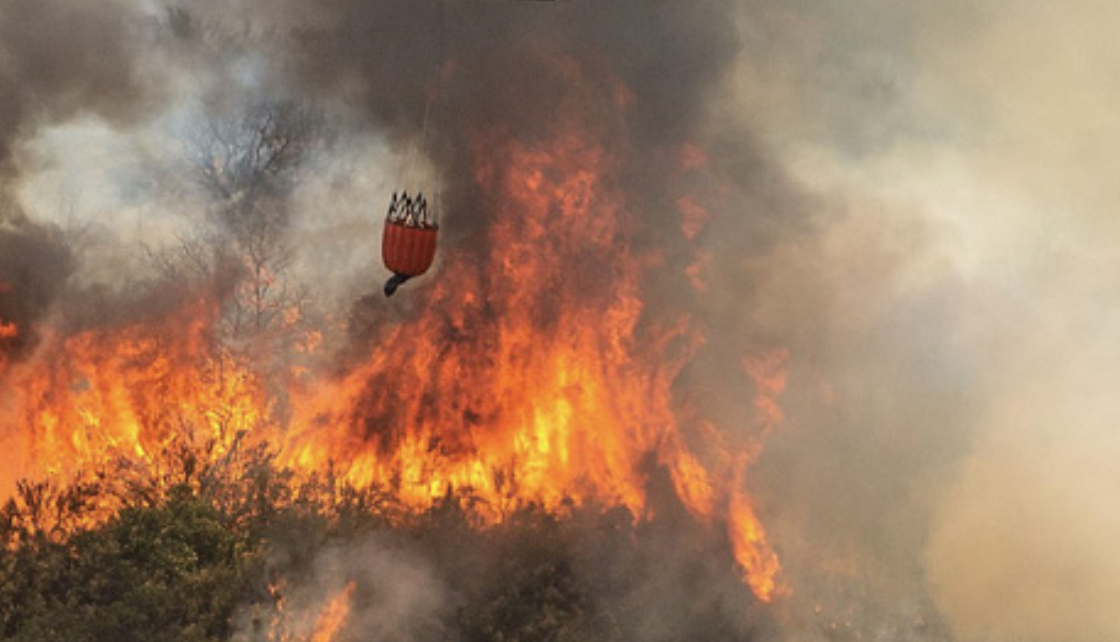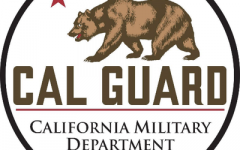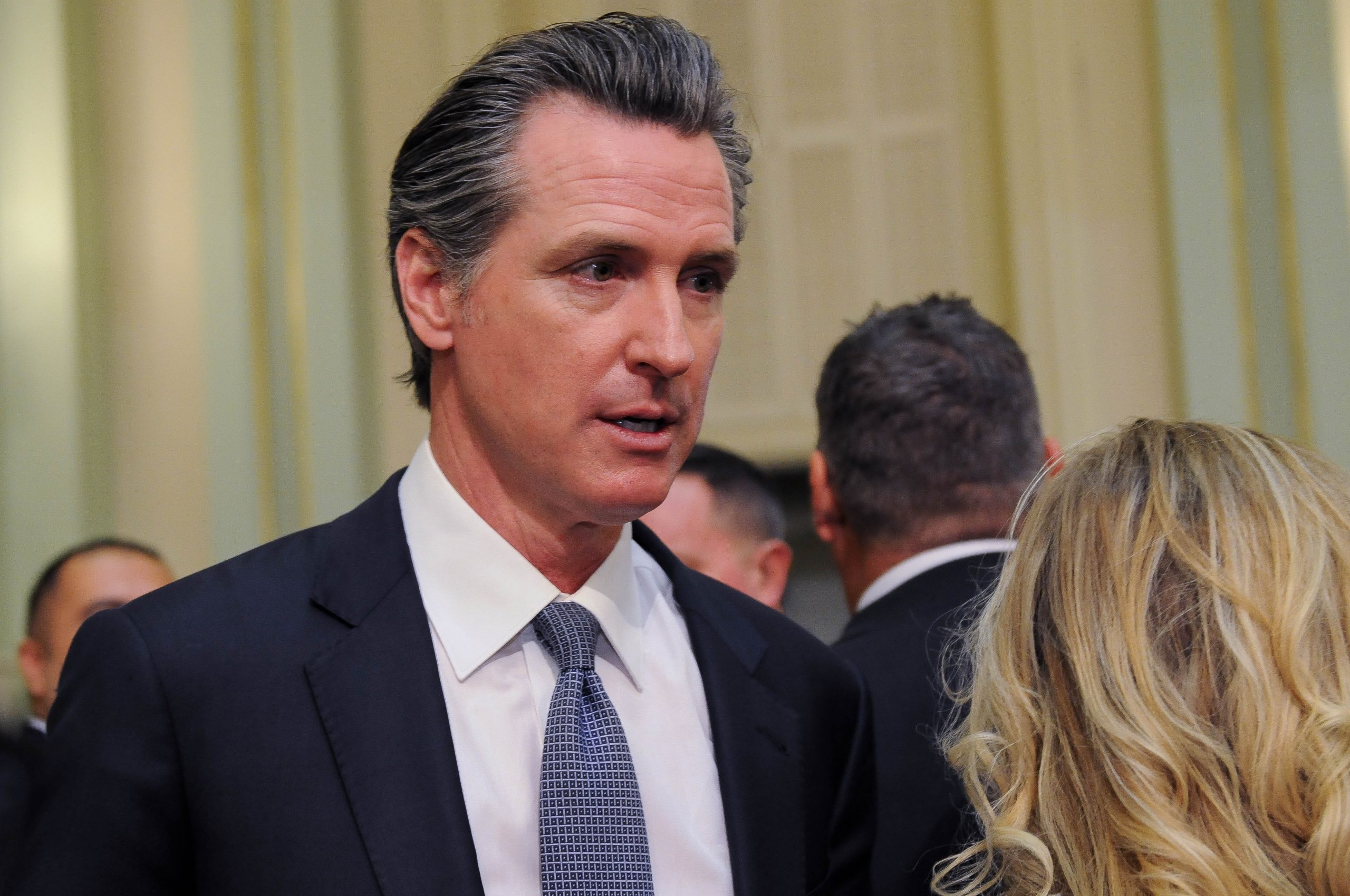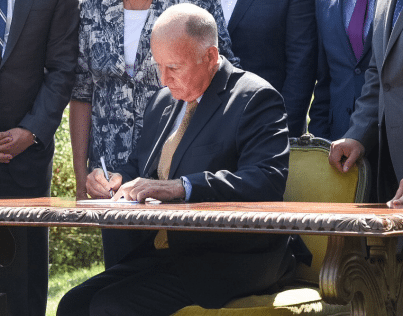
California wildfires. (Photo: fire.ca.gov)
Is Prescribed Burning Oversold?
A collapsed herbivory leads to catastrophic wildfires due to un-grazed grass and brush fuels
By William Simpson, May 22, 2024 7:00 pm
California contains 93-million acres of which, approximately 20-million acres is choked with annual grass and brush wildfire fuels.
And much of that 20-million acres is in very difficult remote terrain that is not suited to mowing or livestock grazing. Oregon contains about 45-million acres and of that about 15-million acres is remote and very difficult terrain, also filled with annually-occurring grass and brush wildfire fuels.
American taxpayers need to start asking these questions before it’s too late.
What has caused the over abundant grass and brush wildfire fuels across western landscapes?
Numerous published peer-reviewed studies state: A collapsed herbivory leads to catastrophic wildfires due to un-grazed grass and brush fuels. That situation can be reversed by reestablishing the native herbivory.
Once the herbivory has collapsed, how often does a wilderness landscape producing annual grass and brush have to be burned?
Generally, on landscapes lacking proper herbivore populations, it only takes 2-3 years after a prescribed burn or wildfire for grass and brush to reestablish itself and become over-abundant.
That means the same landscapes would have to be burned repeatedly, which devastates soils, hydrology and the flora and fauna.
There are essentially two kinds of large-bodied herbivores in North America today:
- Non-ruminant; horses: Horses are not ruminants and therefore don’t digest most of the seeds of native plants and grasses they eat. Horses reseed and fertilize the landscapes where they graze, which benefits the ecosystem.
- Ruminants; cattle, buffalo, and cervids (deer, elk, etc.). Smaller ruminants include sheep and goats. These ruminants digest most of the seeds they eat, ending the life-cycles of the grasses and plants they eat, thereby denying essential sustenance for other animals, including insects and pollinators. Numerous scientific studies show that depletion of native seeds degrades ecosystems.
California’s deer population has collapsed over the past few decades and is currently down about 2-million animals, or more. These missing deer had been grazing-off at least 2.4-million tons of grass and brush (each deer consumes about 1.2 tons per year).
The collapsed herbivory in California and Oregon assures that these wildfire fuels will continue to remain a serious fuels hazard on the landscape.
Is profit driving the prescribed fire (aka: Rx Fire) narrative?
Prescribed burning has become a multi-million-dollar annual business for both private and public sectors. But the metrics and science show it’s both a dangerous and inadequate band-aid to a problem that has a cost-free nature-based solution via the reestablishment of the native herbivory.
More at this insurance analyst link.
How many acres can realistically be burned annually in California and Oregon?
California Governor Gavin Newsom bragged about prescribed burning 90,000 acres of the 20-million acres at risk in CA, as if it was some huge accomplishment. Even if that was true, it amounts to a minuscule fraction of what would be needed, even if was safe and practical.
The Guardian looked into Newsom’s claim and learned it was false, and that he only actually conducted prescribed burning on 11,400 acres.
How much smoke can humans and wildlife (and some crops, like grapes) withstand?
The Office of Environmental Health Hazard Assessment (OEHHA)
Smoke from wildfires (and prescribed burning) is already adversely impacting human health. Is it wise to add more smoke to the air that humans are breathing?
Info from the EPA.
Info from Yale Medicine.
Info from American Heart and Lung Association.
And what about the impacts of adding even more greenhouse gases to the atmosphere?
Is it environmentally legitimate or even possible to burn millions of acres just in California every two or three years?
Arguably, some people making money off prescribed fire think it’s a good idea.
Are taxpayers willing to spend $-hundreds of millions annually for prescribed burning, year after year for a tiny band-aid on the bleeding artery?
Taxpayers can barely shoulder the existing costs and losses due to annual wildfires.
Are Prescribed Fires effective or just a tiny band-aid on a big problem best solved with other natural cost-effective means?
There are opinions arguing against prescribed burning from several relevant and science-based perspectives:
Are prescribed fires damaging the soils of our wilderness areas?
Science says even low intensity fire is damaging the landscape.
Most Range Management Plans (RMPs) already take into consideration that prescribed burns cannot be conducted on lands with collapsed herbivories that are suffering from abnormally high grass and brush fuel levels.
These government agency RMPs specify that prior to any prescribed burning, ‘pre-treatment’ must be undertaken otherwise the heat of the fire could severely damage the landscape.
Here is an excerpt from the Range Management Plan (‘RMP’) for the Cascade Siskiyou National Monument, Page 33, ‘Prescribed Fire’:
“In many cases, fire cannot safely and effectively be reintroduced to the landscape without prior treatments to thin small trees or remove excessive brush and understory fuels. Without prior treatment, the energy release from prescribed fire as the initial treatment would exceed desired intensity levels and have undesirable effects on vegetation and soil.”
Pre-treatment (aka: ‘prior treatment’) is a very expensive and time-consuming operation that realistically can only be done across a very limited number of acres per year.
And considering the total number of acres (9,750-acres), where treatments have been accomplished over seven (7) decades of time, cited on page-199 (image below) of the proposed updated RMP for the CSNM, pre-treating and prescribed fire is obviously a very poor solution.

And as cited in the BLM’s own RMP studies and documents, prescribed fire without the required ‘pre-treatments’ results in devastating impacts:
“In many cases, fire cannot safely and effectively be reintroduced to the landscape without prior treatments to thin small trees or remove excessive brush and understory fuels. Without prior treatment, the energy release from prescribed fire as the initial treatment would exceed desired intensity levels and have undesirable effects on vegetation and soil.”
Moreover, new science informs us that even low-intensity fire damages soils, as we read in this article.
- Is Prescribed Burning Oversold? - May 22, 2024
- Wildfire Season Is Almost Here! - April 30, 2024
- Klamath Dams and Salmon Restoration – Truth vs. Fiction - April 19, 2024





Fire is a needed and necessary part of nearly all ecosystems in CA. The native tribes had it right! With the regulations and politics (thank you governor) plus lack of funding, it is truly not a matter of IF it burn it a matter of WHEN it will burn. Certainly burning under control is better that catastrophic burning out of control. What is the total cost of “control” for wildfires compared to prescribed burns? And now for homeowners not able to get insurance…hummm
The fuel load on most California land is far too high to prescribe burn without a lot of brush and dead fuel removal. California has been waging a very successful war on cattle operations and it shows. I drive through land that once was beautiful. No brush and healthy grasses. Once the grazing stopped the brush took over and now you can’t even walk through it due to the dense brush. It took about 20 years for prime grazing land to become a fire hazard. Start up cattle grazing on a massive scale and watch the fire danger recede into the past.
True low intensity fires are beneficial however I have seen that fire managers in my area wait until fuel moisture is too low in an attempt to remove All the brush and dead fuel resulting in fires that are anything but low intensity. They need to rethink their practices and burn when fires would actually be of low intensity.
True story – A friend who headed up the local National Forest Service office had a plot of land they parodically burned as a sort of demonstration plot. He decided fires were not hot enough to burn every last stem of a native ground cover called Bear Clover. He waited until late in spring and then lit it off. He managed to kill almost every single Ponderosa on the land with 10 foot high flames. Now it is just a field. The Bear Clover is doing just find however. I have seen much the same result in Yosemite Park. Some areas they pretreat and the fires work out great. In others they let it rip and kill 150′ tall trees. They do seem to have learned a lesson as the last time I was there they were conducting large scale fuel removal in the valley.
Fun Fact- The annual growth in the Sierra Foothills is about two tons of biomass per acre. I heard that figure several years ago and have since kept track of the approximate amount of material I’ve removed from my 2 1/2 acres here at 1900 feet elevation every year in both brush and firewood and I believe that figure is pretty darn accurate.
Two tons per acre per year may not seem like much but let that accumulate over a period of time through mismanagement and you can see one of the prime reasons for the fires we experience in California. And this mismanagement can happen on a large scale, such as on public lands, and on smaller parcels owned privately by clueless individuals who think that overgrowth is ‘natural’.
Ah, “studies”.
What decades of reading these “studies’ taught me is the vast majority of them are written by people who have absolutely no idea about the landscape history of California since the end of the last Ice Age.
When the first Europeans turned up the local Amerindian tribes had been very actively managing the landscape with fire for more than 7,000 years. All early descriptions of California describe the smoke over most of the state during the dry season. Due to set fires by the native tribes. And natural fires due to lightning.
The Californios ranchers and later the Anglo ones continued the native tradition of very active landscape management using fire. Until the Sierra Club and the Forestry Service started to shut them down. That was what the who “Slow Burn” controversy over 120 years was about. So in order to “protect the environment” aggressive fire suppression was attempted and mostly worked until the current generation of eco-loons shut down one by one since the 1990’s all the effective methods used for fire suppression. CARB shutdown prescribed burns. CalEPA pretty much shutdown building fire breaks and fire roads etc. And Propositions stopped the uses of herbicides that allowed back country firebreaks to be kept clear. And so on.
So that got us to where we had the the biggest loss of delicate eco-systems in the last decade since the days of hydraulic mining in the late 19th century and the worst air quality for almost as long. I’d take those brown smoggy eye burning days in LA in the 1970’s and 1980’s over some of the worst of the recent wildfire clouds of very toxic hydrocarbons and particulates. That lingered for weeks.
There will be no solution until all the post 1975 CalEPA / CARB regs / laws are repealed and they start again. With regs based on actual science not the eco-lunacy of the Sierra Clue / EDF etc and the fake science of CARB / CalEPA “studies”. You should read the, They are a joke.
So not going to happen any time soon. So all the currently unburned area of California will burn. Sooner rather than later. And just like with the MTBE scandal in the 1990’s everyone but the true culprits will be blamed (CARB/CalEPA etc) and the whole sorry mess will be quickly memory holed by the media.